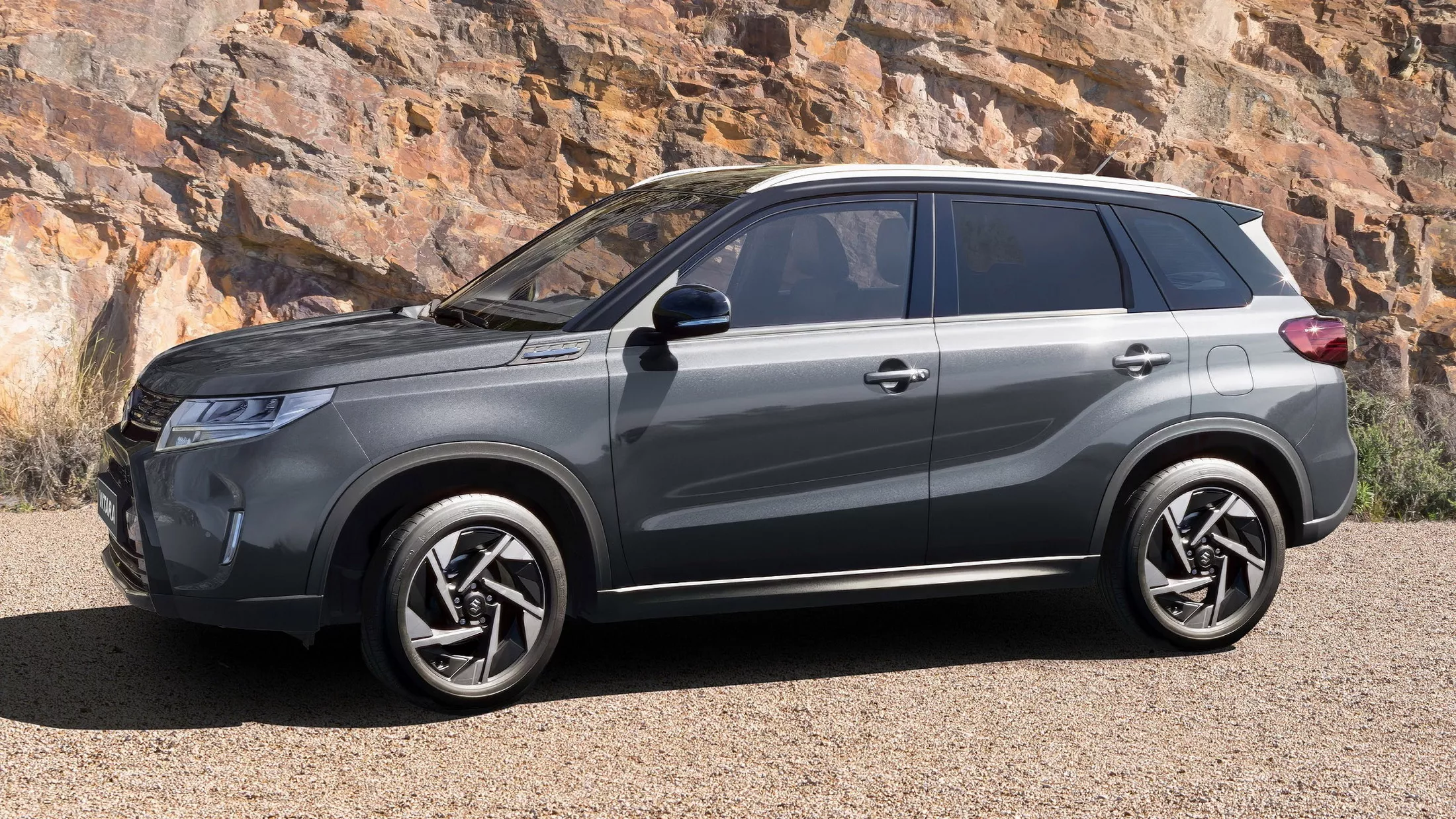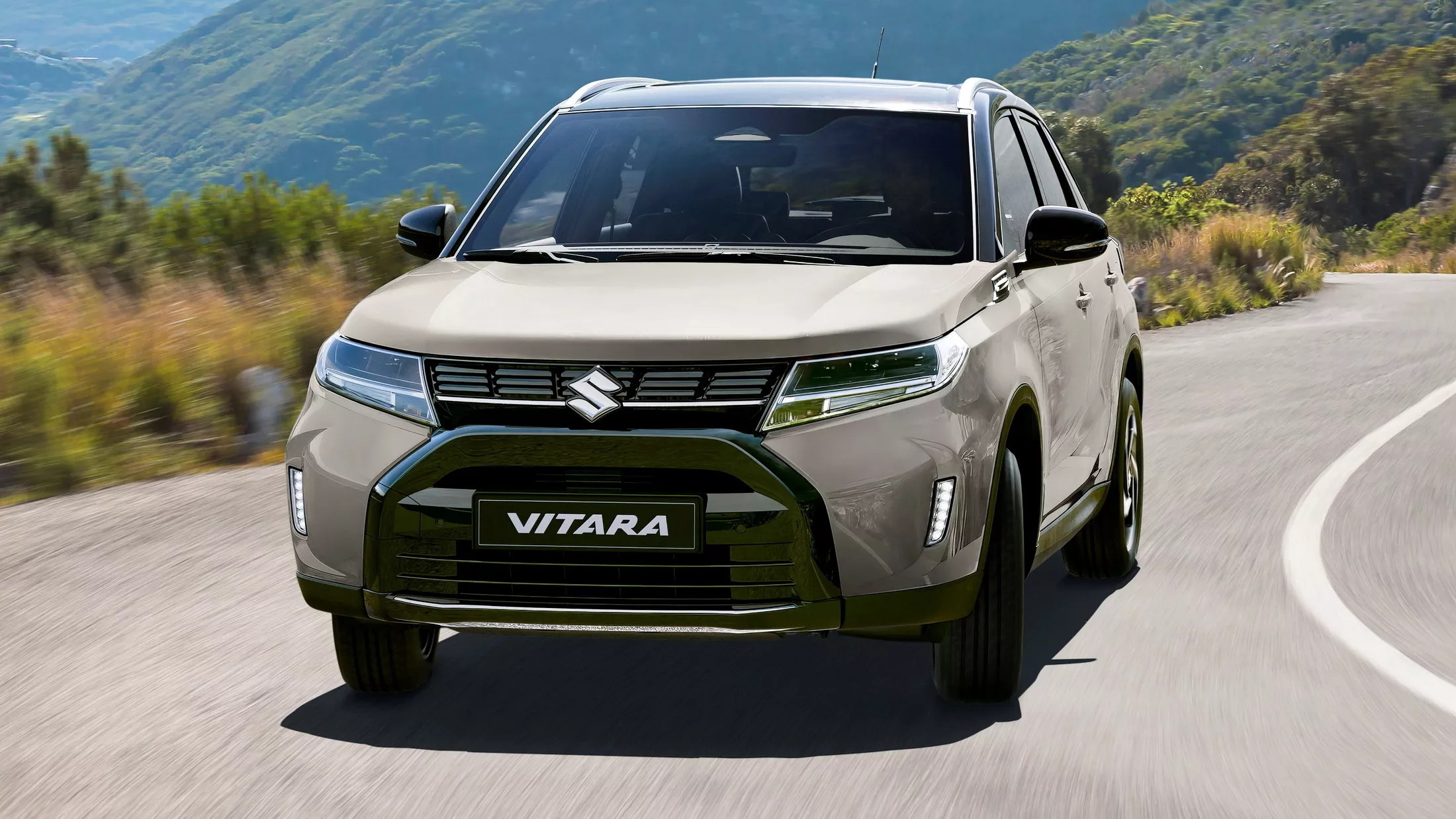In October 2014, Suzuki unveiled the current generation Suzuki Vitara at the Paris Motor Show, marking a significant departure from its predecessors by transitioning more towards a crossover than an off-road vehicle. After four years on the market, the Vitara received a minor facelift in 2018, and now, six years later, Suzuki opts for another update rather than a complete overhaul.
While the Suzuki Vitara remains recognizable, notable changes have been made to its exterior design. Updates include new headlight designs, a revamped grille featuring a single chromed horizontal slat instead of six vertical ones, and a redesigned bumper with fewer chrome accents and increased black plastic elements. The body-colored strip between the upper and lower grille has been removed, and the lower cooling opening is now encased in black plastic.

Additionally, Suzuki introduced new alloy wheels and expanded the range of available paint colors for the nearly decade-old crossover. Internally, changes focus on the interior rather than the drivetrain, with the Vitara receiving a larger infotainment screen, now up to 9 inches in size and compatible with Apple CarPlay and Android Auto.
Enhanced safety features include improvements to the Dual Sensor Brake Support II, a Driver Monitoring System for attention warnings, adaptive cruise control, and Lane Keeping Assist.
The Suzuki Vitara lineup includes a 115 hp 1.5 Hybrid and a mild-hybrid 129 hp 1.4 Boosterjet Smart Hybrid, with optional AllGrip all-wheel drive available for the latter. The mild-hybrid variant comes with a six-speed manual transmission as standard. These updates aim to keep the Suzuki Vitara competitive in the crossover market while enhancing its appeal with modern features and safety technologies.

